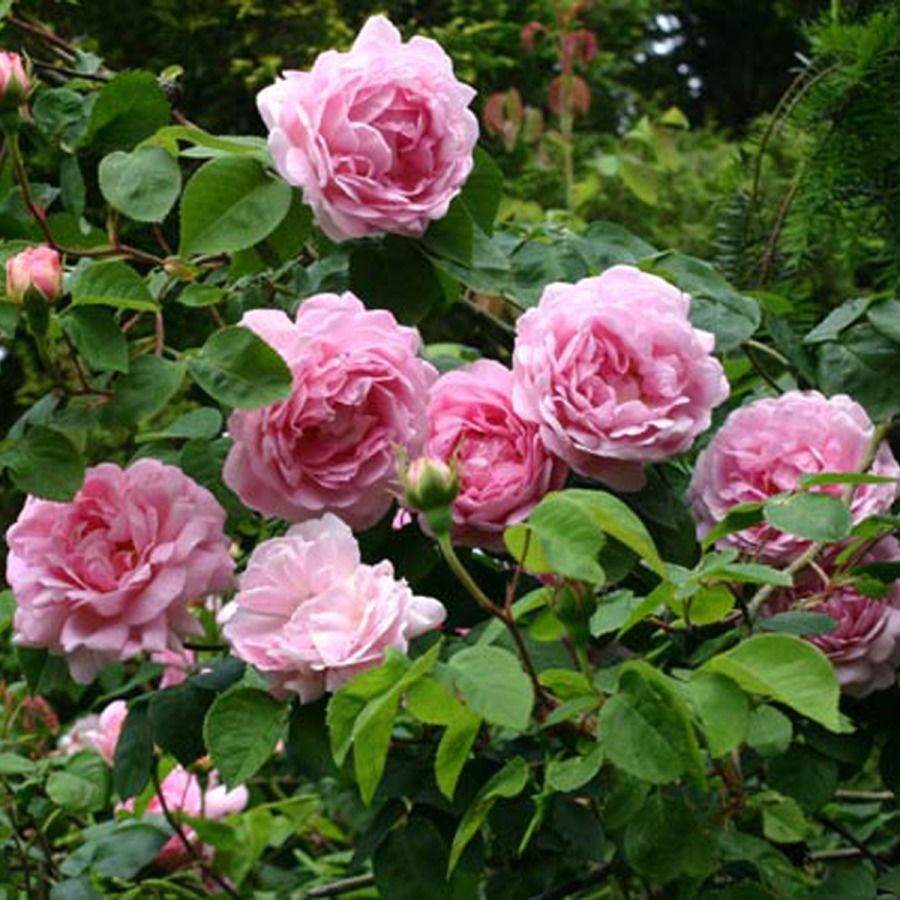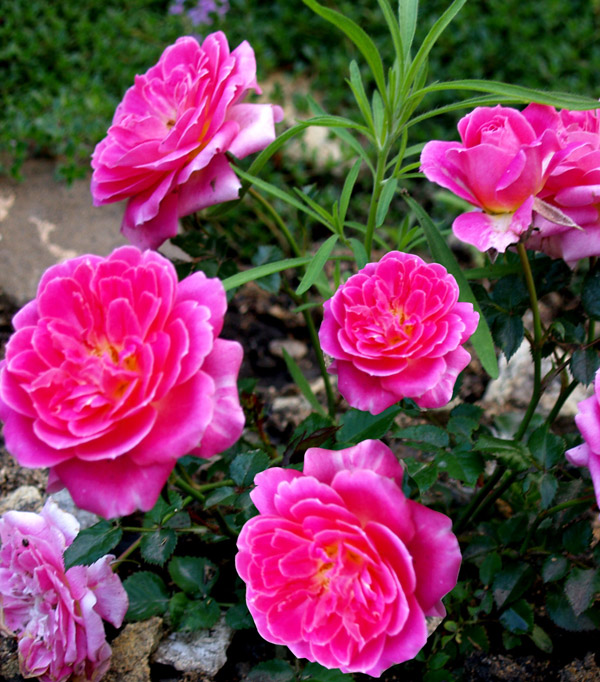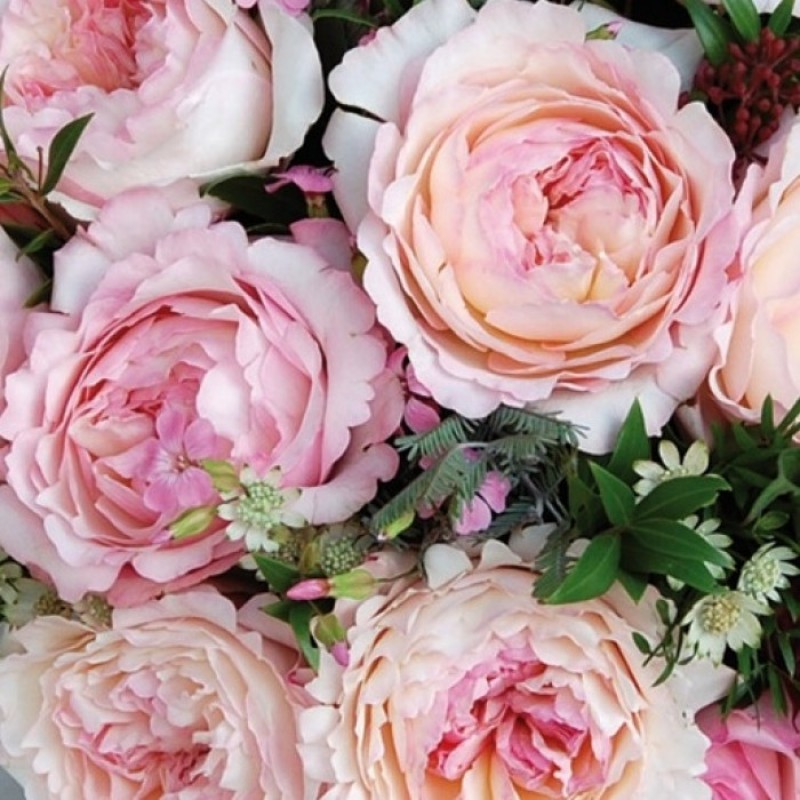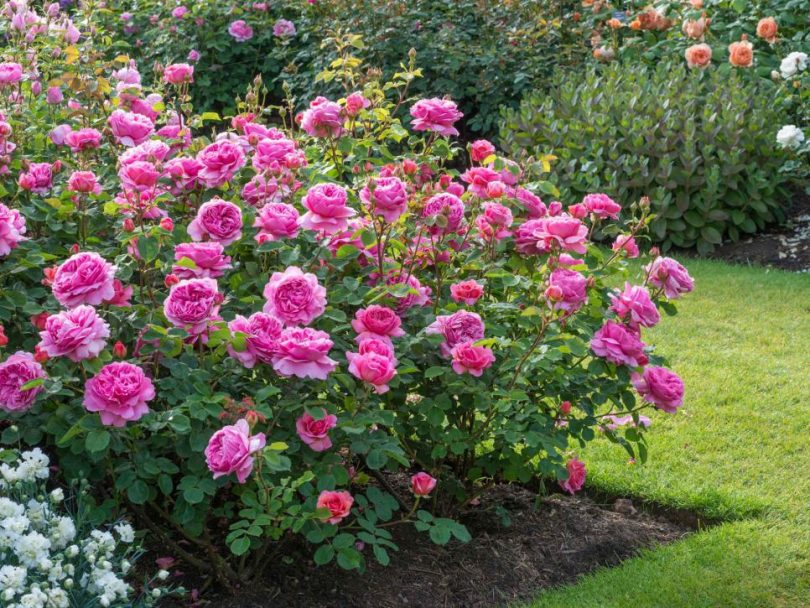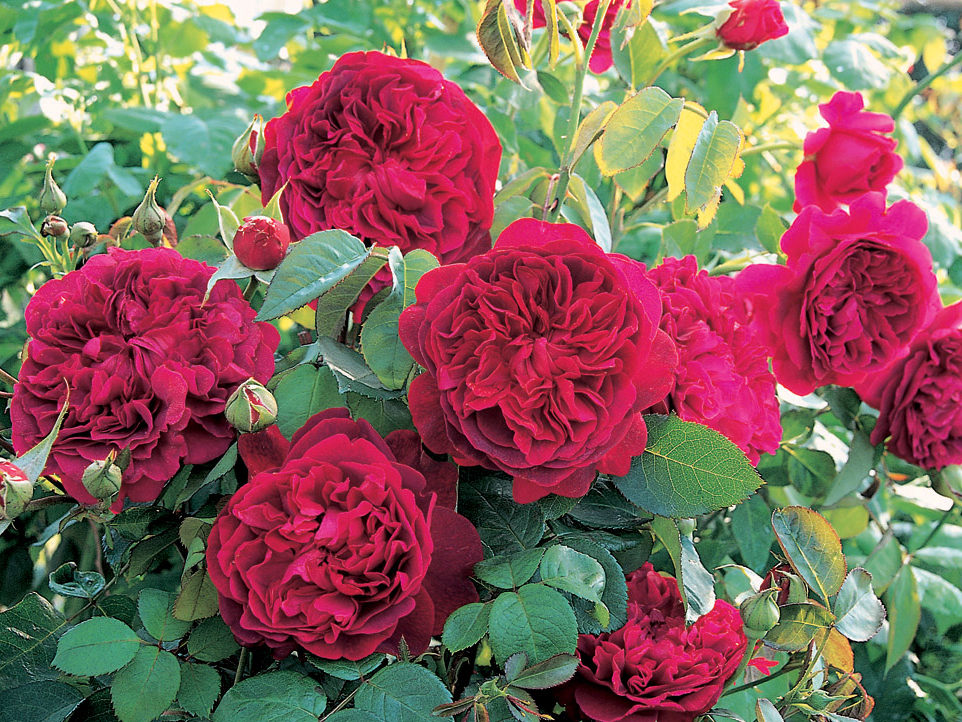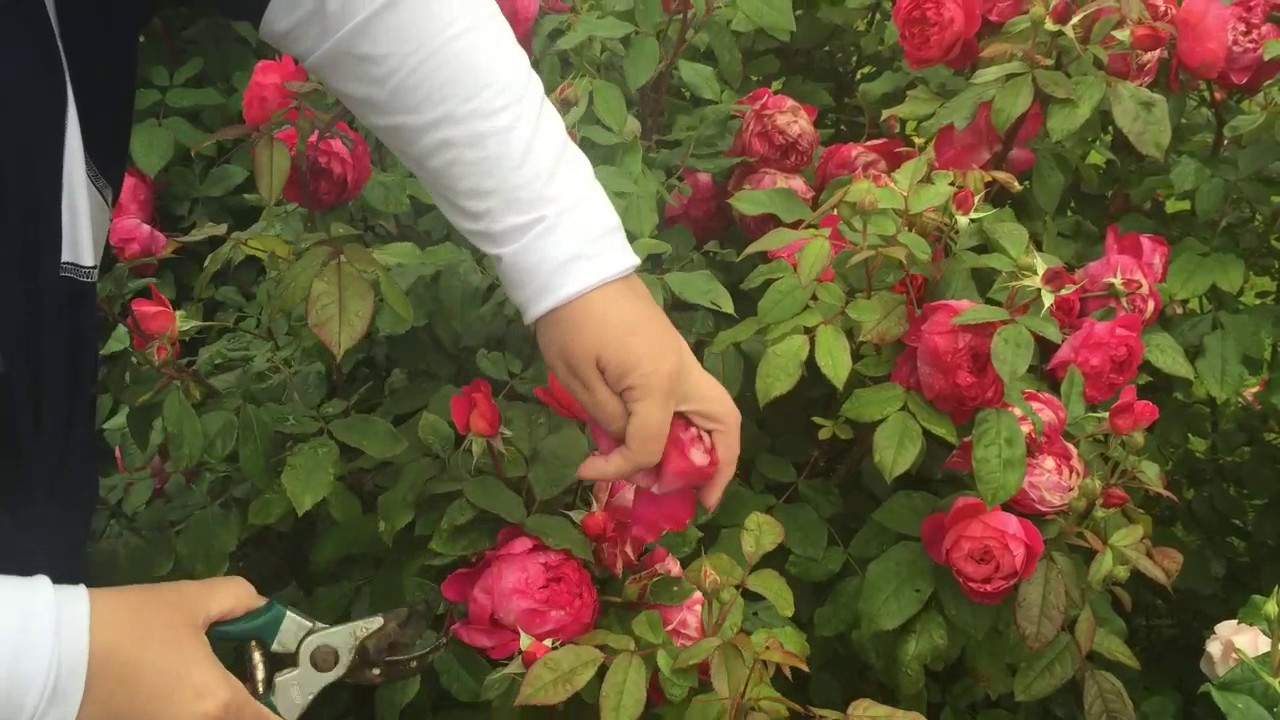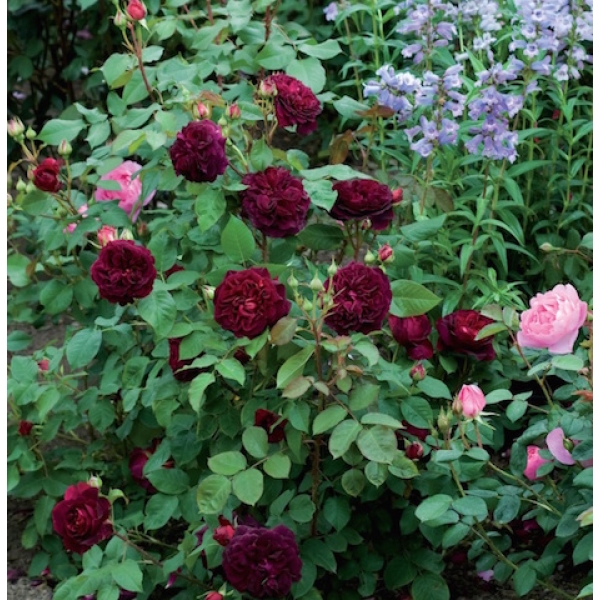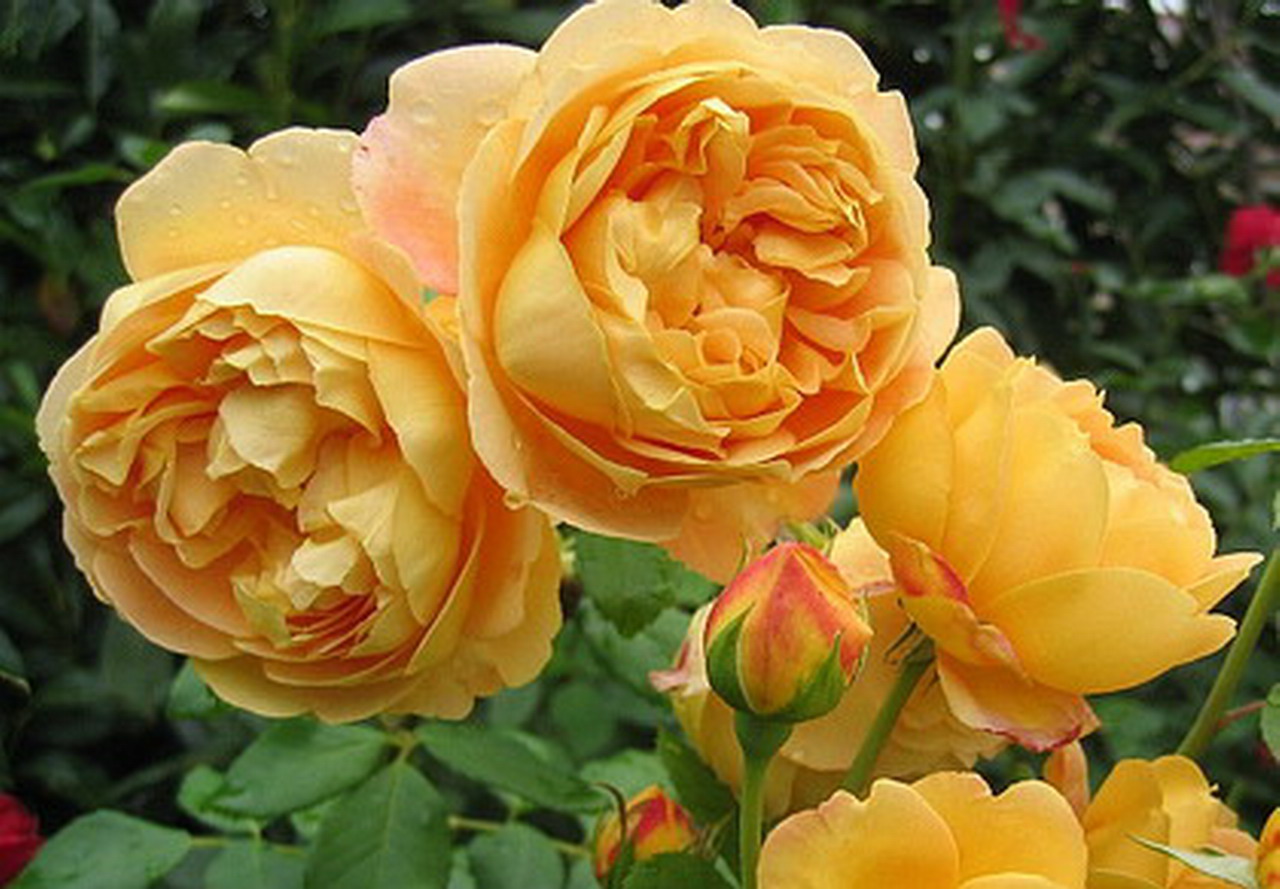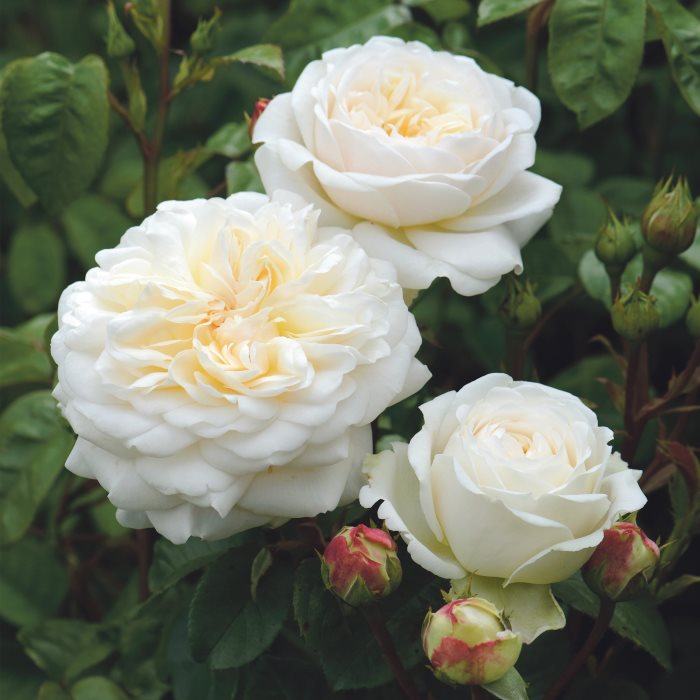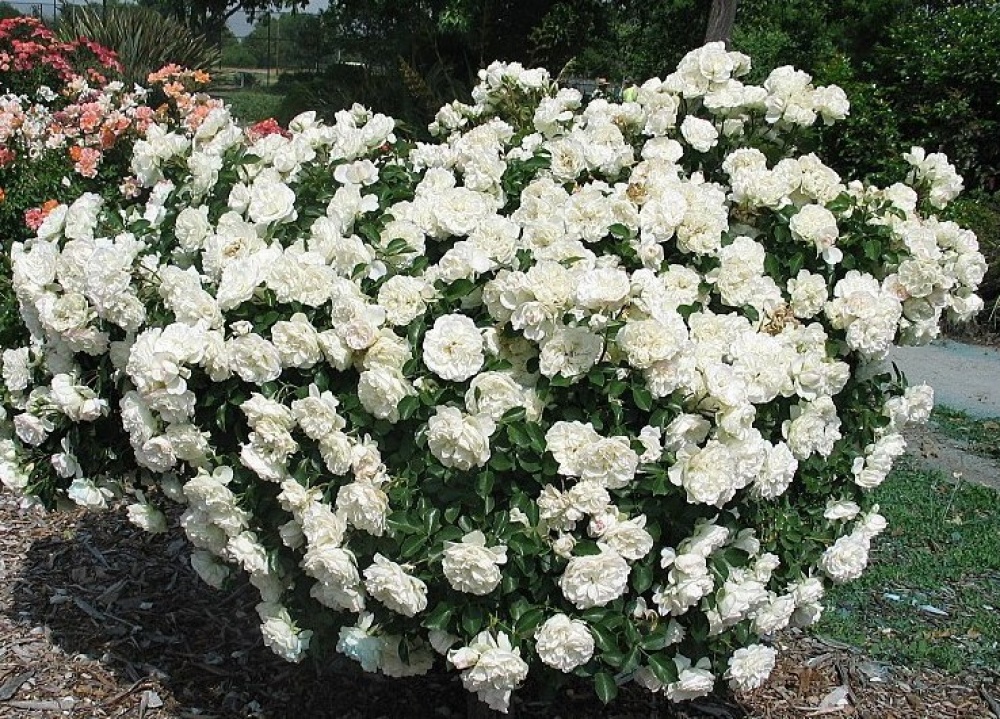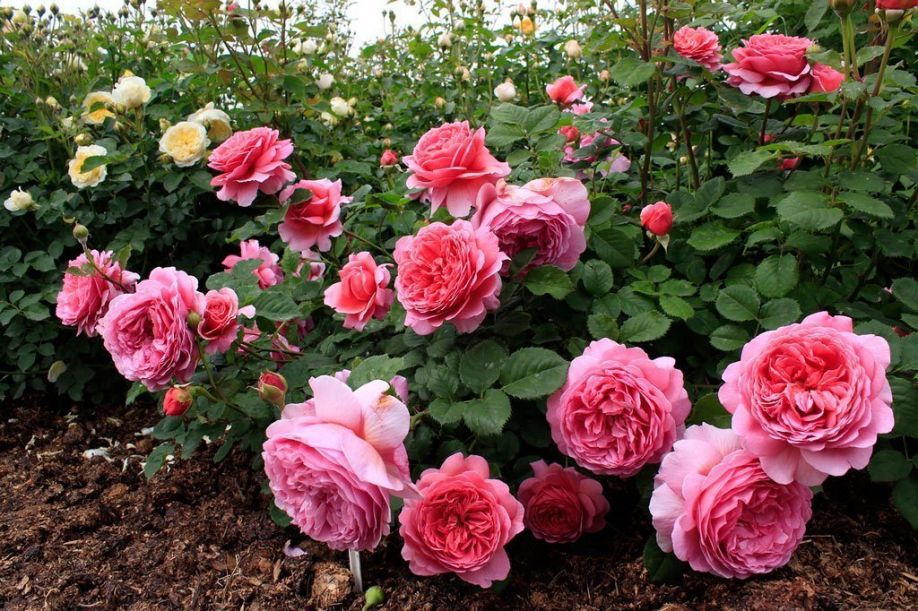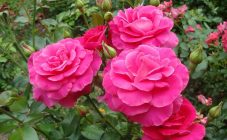Content:
Peony rose (also Austin rose) is a collective name for hybrid tea varieties of the Rosehip genus. They were bred in the 80s of the XX century. English breeder D. Austin. The scientist's goal was to create a hybrid that can bloom all year round. And he succeeded. In addition, Austin hybrids are distinguished by a variety of colors, resistance to many diseases, unpretentious care and high decorative qualities of the buds. They are rarely attacked by pests, have a persistent scent and grow quickly. Peony roses owe their name to the lush shape of flowers that outwardly resemble peonies.
Pink hybrids
Peony roses can be of almost any hue, but pinkish hybrids are the most common. Austin roses of pink shades more than flowers of other colors, resemble peonies in their appearance. The color palette is quite extensive, the intensity of the color of the buds varies from delicate pale pink shades to rich fuchsia color.
The most famous are the following varieties.
Constance Spry
Constance Spry rose flowers are considered one of the largest among all English and antique roses. Their size reaches 15 cm in diameter. Delicate pink buds of the variety have a rounded cup-shaped shape and a pleasant chypre aroma. The texture of the petals is dense. The foliage is dense, matte, slightly harsh. The height of the bush reaches 5 m, width - 2.8 m.
Constance Spry's description says that the variety is well adapted to cold climates and tolerates shade well. The rose blooms once a year in early summer. After flowering, there is a high risk of damage by powdery mildew and black spot.
The variety is easy to cut and, when grown on its roots, forms a low, highly branched bush.
Miranda
Hybrid Miranda is a peony bush rose with a pleasant, but weakly pronounced aroma. The variety is compact, low. The height of the bush rarely exceeds 1.5 m. The average width is 50-55 cm. The flowers of the rose do not form inflorescences, which makes it convenient to use single flowers when making bouquets. The buds of Miranda are medium in size, their diameter is 10-11 cm. The outer petals of the rose are painted in a pale pink color, approaching white, while the inner ones are much more saturated in color.
Rose Miranda blooms 2 times a summer. The plant grows well in high humidity conditions and is resistant to partial shade. The compact shape of the bush allows you to grow this variety without support.
Rozalinda
The flowers of the Rosalind variety are painted in a delicate creamy pink color. The length of flowering shoots reaches 40 cm, the inflorescences consist of 6-9 flowers, which are ovoid and have a double petal texture. The buds reach 14 cm in diameter. The aroma of the rose is poorly expressed. The foliage is small, matte.
The height of the bush reaches 80 cm.
The variety is resistant to sudden changes in temperature. Rosalind feels equally well both during the heat and during the frost. It is better to grow a hybrid outdoors.
Keira
Rose Keira is a disease-resistant variety with a lush vintage flower shape. Plant buds reach 9 cm in diameter. The color of the petals varies between pale pink and peach shades.
The aroma of Keira is persistent and intense.
The average height of the bush is 60 cm.
Juliet (Juliet)
Peony roses of David Austin Juliet - a variety with large dense buds. The flowers of the hybrid do not make up inflorescences, therefore the Juliet rose is often used in bouquets. The diameter of the buds reaches 8-10 cm.The height of the bush is 100-110 cm, the width is 70-75 cm.
Rose Juliet stands out against the background of other varieties of Austin hybrids with a spectacular gradient, namely, a smooth transition from a rich peach color to a delicate cream at the edge of the petals. The scent of Juliet rose is of medium intensity.
The variety rarely suffers from black spot and powdery mildew. Also, peony roses Juliet are resistant to rain - the flowers are rarely damaged by moisture that collects in them.
Austin hybrids red
Red is a symbol of love and passion. The red buds of peony roses in themselves attract attention, excite and delight. That is why flowers of this particular shade are most often chosen as a gift for the second half.
Shakespeare (William Shakespeare)
Shakespeare is a massive shrub, reaching 2 m in height and 1.2 m in width. The variety is resistant to pests, harsh climatic conditions and many infections. Shakespeare rose blooms 2 times a year - in early summer and autumn.
The flowers of the variety are large, double. They form inflorescences of 3-5 buds, the average diameter of which is 8 cm. The color of the petals is varied and varies from scarlet to purple shades.
Shakespeare rose aroma is strong, intense.
William Shakespeare 2000
Shakespeare 2000 is a vigorous, unpretentious variety with the aroma of old roses. Hybrid bushes grow up to 1.8 m in height.
The flowers of the rose are of a bright red or even crimson hue, densely double, with a rich aroma in which violet notes are felt. The buds are located on the shoots singly.
The rose is shade-tolerant and has excellent disease resistance.
Benjamin Britten
Peony roses of this variety are resistant to low temperatures and many infections. The buds of the Benjamin Britten hybrid reach 12 cm in diameter. Flowers are collected in inflorescences of 3 pcs. and have a light fruity aroma. The color of the petals ranges from raspberry to orange.
A distinctive feature of the rose is the nature of flowering - the buds remain closed throughout the entire period.
The height of the bush rarely exceeds 1 m.
Munstead Wood
The Munstead Wood peony roses have a very rich and sweet scent. Their burgundy petals have a velvety texture, and as they open, the color changes to a darker one.
Rosebuds form inflorescences with an average of 6 flowers.
The height of the bush is 1 m, the diameter is 50-60 cm.
The rose blooms profusely and for a long time. The variety is resistant to sudden changes in weather conditions and various diseases.
Yellow Aspen hybrids
Yellow roses are a symbol not only of early separation, but also of friendliness and happiness. There are many peony roses of this shade.
Graham Tomas
A variety with medium-sized double flowers, which make up 5-6 inflorescences. The color of the petals is bright yellow, saturated. The scent of the rose is pleasant, but weak.
Graham Thomas bushes reach 1.5-3 m in height. The hybrid is resistant to infections and cold temperatures, which explains its popularity.
Golden Celebration
Rose Golden Celebration is a tall, spreading variety with large, strong-smelling honey-colored buds. The diameter of the flowers is 16 cm. The flowers form clusters of 5-6 buds.
Hybrid bushes grow up to 180 cm in height and 120 cm in width. The stems of the plant are bent in the form of a parabola.
Austin white hybrids
White peony roses are not as common as yellow, red or pink cousins. This is because pure white is almost impossible to breed when breeding roses. As a result, in most cases, the flowers of plants have a weakly expressed additional shade: peach, pink, cream or yellowish.
Tranquility
Tranquility is a powerful shrub, the height of which reaches 120 cm. The variety is distinguished by the almost complete absence of thorns.
The flowers of the rose are medium in size, their diameter ranges from 10 to 12 cm. The closed buds are yellowish in color, but the petals of the opened flowers are painted in a lighter color. Tranquility rose scent is reminiscent of apples.
The hybrid blooms 2 times a year.
Claire Austin
The buds of this peony rose have the shape of small cups with a diameter of 8-10 cm. They are formed into inflorescences of 2-3 buds, due to which the shrub has a rather lush appearance. Claire Astin's flower petals are creamy white.
The height of the bush rarely reaches 150 cm, but the average width is 100 cm, since the variety is rather sprawling. It tolerates high humidity well and blooms twice a year.
Claire Astin's scent is intense.
Alabaster
Alabaster is a white peony rose with large double buds forming inflorescences of 4-6 flowers. Rose bushes grow up to 1 m in height and 50 cm in length. The stems of the plant are long, tough, so the flowers of the variety are convenient to use when making bouquets.
The Alabaster rose blooms twice a season.
Care and landing
Caring for peony roses is not difficult due to the unpretentiousness of these plants. However, in order for the bushes to develop correctly, you need to know some of the features of their planting and reproduction.
- Reproduction. Peony roses are propagated by grafting, less often by cuttings, since in the latter case there is a great risk that the decorative properties of the plant will weaken.
- Fertilizer. It is better to plant peony roses in autumn or spring, while the soil for planting should be abundantly fertilized, and in the fall.
The fertilizer must be spread over the ground in an even layer of about 2 cm. After that, the site is carefully dug up, because the flowers need loose soil.
In general, fertilizers play a significant role in the care of these plants. In the spring, use special dressing for roses. With the onset of July, nitrogen fertilizing is introduced. During flowering, peony roses are fed with phosphorus and potassium.
Site selection and landing
Most varieties of peony roses tolerate shade well, however, when choosing a site for planting a plant, it is better to opt for a bright, sunny place well protected from the wind. At the same time, the planting pit should be large, since in cramped conditions the root system of the rose cannot grow and form an extensive branched system.
The minimum size of the planting pit is 1 m wide and 0.5 m deep. Compost or manure is usually placed on the food. The distance between two adjacent pits should not be less than 0.5 m. The best option is to plant the bushes at a distance of 1 m from each other. At the same time, the seedling is buried 10 cm deep. This will help keep the plant root system free from frost. In addition, the graft should be above the soil level (at a height of 2-3 cm).
Watering and pruning
Watering peony roses is done as the soil dries. On average, one bush takes 5 liters of water, however, for climbing varieties, a larger amount is required - 12-15 liters. In this case, it is recommended to water the roses in the evening so that the moisture does not evaporate under the influence of sunlight. Water for irrigation must first be defended. Also, it shouldn't be too cold.
Pruning of peony roses is usually carried out in the spring before the start of sap flow. During the procedure, the ends of the stems, as well as old or diseased branches, are removed.
Diseases and pests
Despite the fact that Austin roses are quite resistant to most infections, prevention is never superfluous. In the spring, before buds bloom on the bushes, you can cultivate the ground under them with a weak solution of copper sulfate.
Shelter for the winter
In areas with a cold climate, you need to cover roses for the winter. For this you can use dry leaves, straw or sawdust.
Peony roses are distinguished by a high degree of decorativeness, which is achieved due to the cupped buds and the compact shape of the bush. In addition, the undeniable advantages of Austin roses include the richness of the color palette, resistance to many diseases, ease of care, and rapid growth. The only pronounced drawback of these plants is the weak frost resistance of many varieties. However, this is a small price to pay for the pronounced heady scent and delicious appearance of peony roses.
Now, having learned about the different varieties of peony roses, it will be easier for a florist to choose one or another type. White, pink, red queens of the garden will decorate any site. The main thing is to choose a variety suitable for the region and carry out the correct planting and care!
